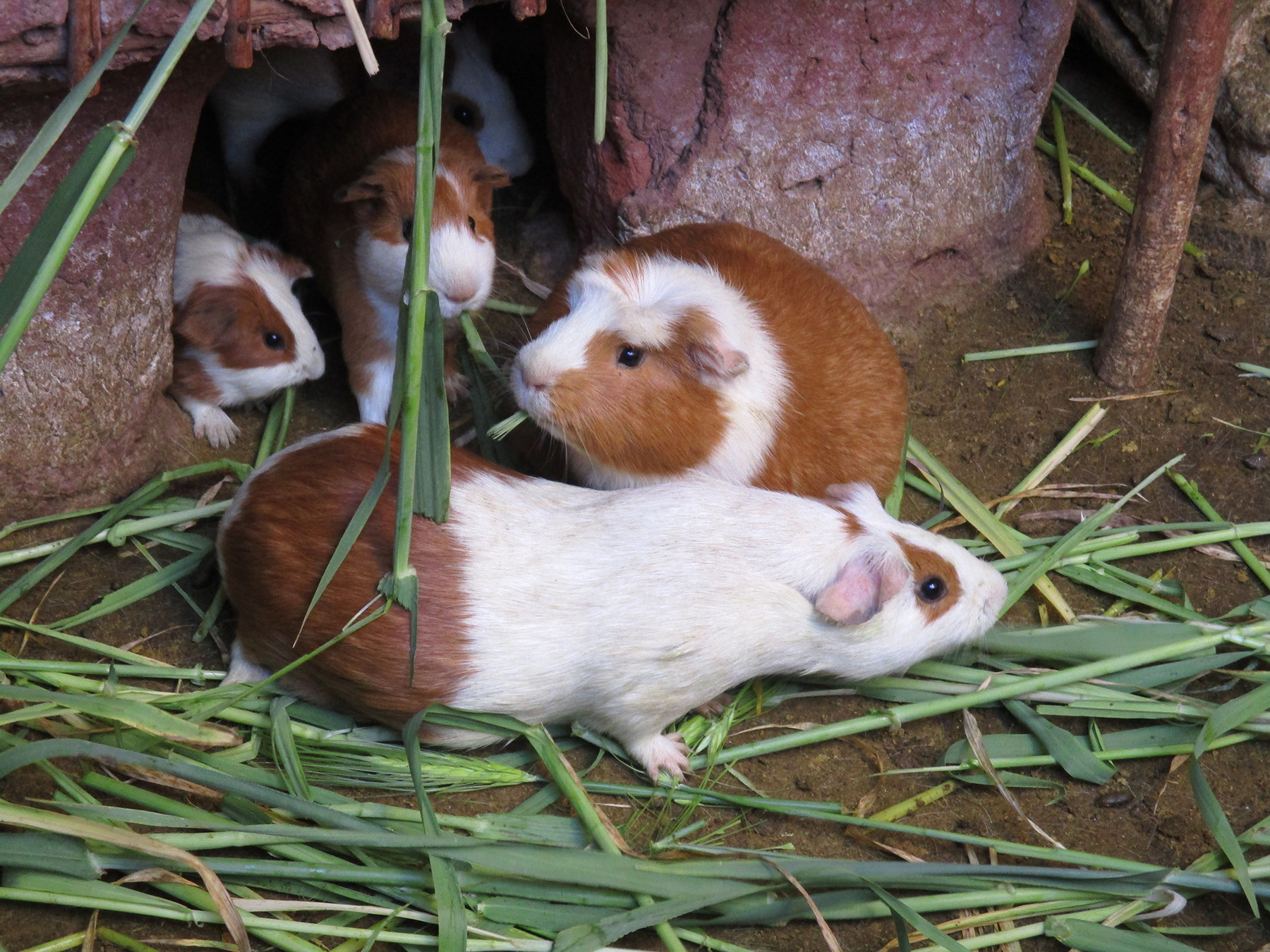In contemporary South America guinea pigs or cuyes continue to be bred for food, with an estimated 65,000 guinea pigs eaten annually in Peru alone. The cuy is also consumed very widely in Ecuador and Bolivia, as well as southern Colombia and northern Argentina and Chile. Many of these animals are reared in peasant households, like these cuyes photographed at the Pisac Market near Cusco. Many, however, are also farmed in large breeding facilities. Since 2013 Peru has observed National Cuy Day (the second Friday in October) to promote the breeding and consumption of this native animal, and the town of Huacho, north of Lima, hosts a cuy festival every July, which includes cuy fashion competitions and cuy races (the contestants are eaten afterwards). Chinese immigrants to Peru have also given a new twist to traditional cuy dishes, with restaurants in Lima’s Chinatown serving sweet-and-sour guinea pig fried in oyster sauce. Eaten, sacrificed, fashioned from clay, represented in art and adopted as a pet, the tiny cuy or guinea pig has developed an impressive global career.
GUINEA PIG MARKET
Helen Cowie
Further reading
- Acosta, J. (2002) Natural and Moral History of the Indies [1589], edited by J. Mangan, translated by F. López-Morillas (Durham, NC: Duke University Press).
- Asúa, M., and R. French (2005) A New World of Animals: Early Modern Europeans on the Creatures of Iberian America (Aldershot, Hampshire: Ashgate Publishing).
- Crosby, A. (1972) The Columbian Exchange: Biological and Cultural Consequences of 1492 (Westport, CT: Greenwood Press).
- Cumberland, C. (1886) The Guinea Pig, or Domestic Cavy, for Food, Fur and Fancy (London: L. Upcott Gill).
- Defrance, S. (2006) ‘The sixth toe: the modern culinary role of the guinea pig in southern Peru’, Food and Foodways, 14 (1): 3–34.
- Few, M., and Z. Tortorici (eds.) (2014) Centering Animals in Latin American History (Durham, NC: Duke University Press).
- Gade, D. (1967) ‘The guinea pig in Andean folk culture’, Geographical Review, 57 (2): 213–24.
- Maas, B. (2019) ‘Why more people in Africa should farm guinea pigs for food’, The Conversation, https://theconversation.com/why-more-people-in-africa-should-farm-guinea-pigs-for- food-108477.
- Morales, E. (1994) ‘The guinea pig in the Andean economy: from household animal to market commodity’, Latin American Research Review, 29 (3), 129–42.
- Parker Brienen, R. (2006) Visions of Savage Paradise: Albert Eckhout, Court Painter in Colonial Dutch Brazil (Amsterdam: Amsterdam University Press).
- Sandweiss, D., and E. Wing (1997) ‘Ritual rodents: the guinea pigs of Chincha, Peru’, Journal of Field Archaeology, 24 (1): 47–58.
- Yamamoto, D. (2015) Guinea Pig (London: Reaktion Books).





